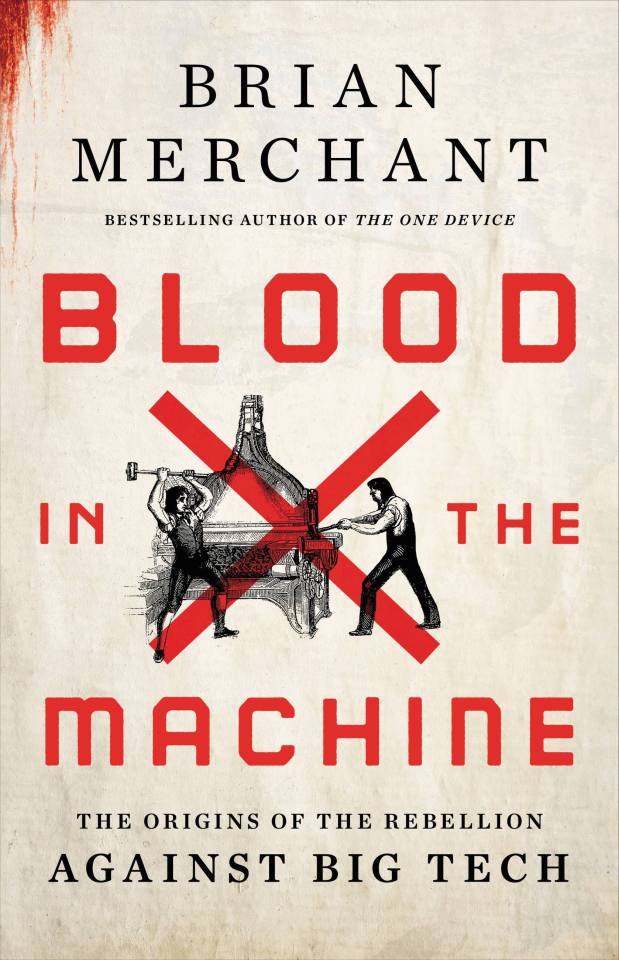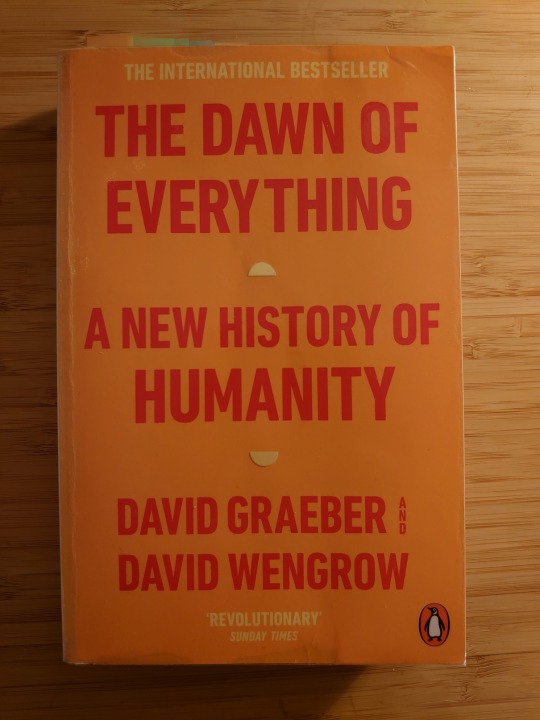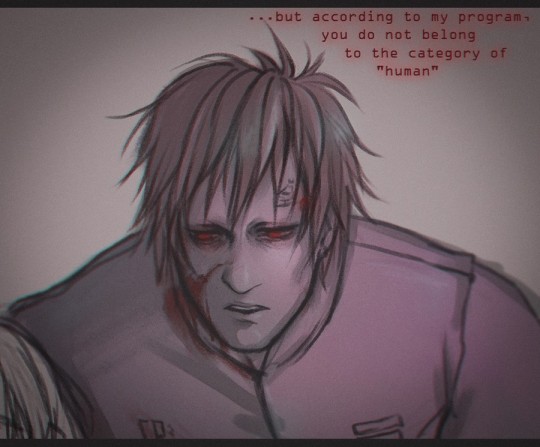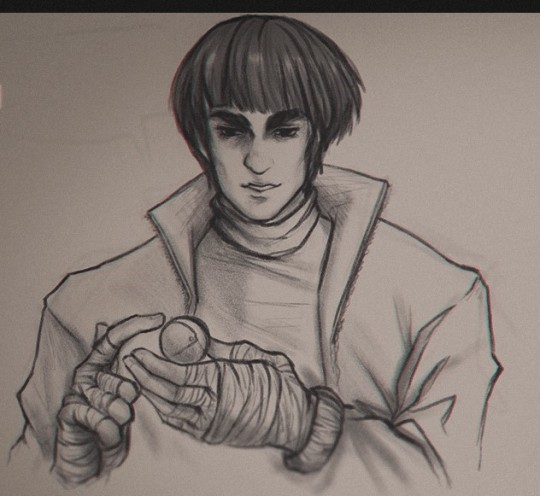#design-driven evaluation
Explore tagged Tumblr posts
Text
Whole System Learning and Evaluation
There aren't extraneous factors anymore: systems awareness and evaluation are what's necessary for making sense of what we do and the influence we have #eval #evaluation #systemsthinking
Persistent, dramatic changes are taking place that influence our work, communities, and personal lives and understanding what it means to learn, respond, and succeed will take changes in how we evaluate it all. A key feature of change in a complex system is that once its shifted, it never goes back; there’s no ‘undoing’ what’s been done. We can change it again to something else, but we will not…

View On WordPress
#attention#climate change#complexity#design#design thinking#design-driven evaluation#developmental evaluation#evaluation#leadership#learning#sensemaking#strategy#systems thinking#time#transformation
3 notes
·
View notes
Note
why are women worse at driving compared to men?
They aren't.
Most Recent Statistics
According to the Insurance Institute for Highway Safety, a USA-based "independent, nonprofit scientific and educational organization" about "motor vehicle crashes" [1]:
73% of motor vehicle crash deaths were of men/boys in 2022
In fact, men have outnumbered women in crash fatalities for every year since 1975 (when data started being collected)
Male crash fatalities were significantly more likely to be intoxicated than female fatalities
Male crash fatalities were also significantly more likely have been speeding than female fatalities
More Data
In a 2023 report, the World Health Organization [2] looked at crash data worldwide, and found men are 3 times more likely than women to be killed in a car crash.
A 2021 study by researchers in England [3] found "men pose higher per-km risk to others than women". To be clear, this means that even after adjusting for amount of distance driven, men are more dangerous drivers than women.
A 2024 report by the French government [4] found 78% of road fatalities were male and 75% of those seriously injured were male
This 2023 study by researchers in Spain [5] found "the results point to Spanish women paying closer attention to traffic regulations, behaving more carefully." (Where "traffic regulations" refers to things like speeding, seat belt use, phone use, "overtaking offenses", etc.)
This Turkish study [6] found that men self-reported less driving safety behaviors than women.
This Texas (USA) study [7] also found men self-reported less driving safety behaviors than women. (And despite the fact that "males reported more behaviors than females that would put them at higher risk of collision ... men have more confidence in their driving skills than women." We should note here, that this is clearly false confidence.)
This study [8] interviewed young drivers in nine European countries and found "the main difference between [young male and female drivers] is not strictly related to judgment of the perceived risk probability but rather to the level of concern experienced about the consequences of the risk." In other words, young men (the highest risk group) are aware of the risks to themselves and others ... they just don't care.
This study of data from 32 countries in "8 cultural cluster" [9] found "men [value] crash risk behaviors more than women do in all cultural clusters observed". They also found "the greater acceptance of risky behavior by males is observed in all cultures."
It's also important to note that these higher fatality rates for men are in spite of the fact that car safety standards are designed and tested only on a male-standard [10, 11]. Women are, in fact, at higher risk than men of injury and death when they are in a crash. This makes the fact that men still outnumber women in crash fatalities all the more significant.
Stereotype Threat
I talk about stereotype in a few posts, including this post and this post.
So, we should also note the effect of the (false) "women are bad drivers" stereotype.
This study [12] found that inducing a stereotype threat "reduced [female driver's] state driving self-efficacy, and further increased mistakes in driving tasks" as compared to a control group.
This study [13] found that "women under stereotype threat ... doubled the number of mistakes" as compared to a control group. They also found the women believed they drove poorly in all conditions.
This study [14] found the same using a driving simulator.
This study [15] found "significant differences in how female drivers were evaluated ... in groups where stereotypes were emphasized or countered ... [but not] in the group where stereotypes were neutralized."
So, not only are women already better drivers than men, we would be even better if society stopped perpetuating this stereotype.
References below the cut:
“Fatality Facts 2022: Males and Females.” IIHS-HLDI Crash Testing and Highway Safety, Insurance Institute for Highway Safety, June 2024, https://www.iihs.org/topics/fatality-statistics/detail/males-and-females.
Global status report on road safety 2023. Geneva: World Health Organization;2023. Licence: CC BY-NC-SA 3.0 IGO.
Aldred, R., Johnson, R., Jackson, C., & Woodcock, J. (2021). How does mode of travel affect risks posed to other road users? An analysis of English road fatality data, incorporating gender and road type. Injury prevention, 27(1), 71-76.
“2023 Road Safety Annual Report | French Road Safety Observatory.” French Road Safety Observatory, ONISR, Sept. 2024, https://www.onisr.securite-routiere.gouv.fr/en/road-safety-performance/annual-road-safety-reports/2023-road-safety-annual-report.
Castro-Nuno, M., & Lopez-Valpuesta, L. (2023, May). Traffic compliance effect of more women behind the wheel: Pride or prejudice?. In Women's Studies International Forum (Vol. 98, p. 102727). Pergamon.
Özkan, T., & Lajunen, T. (2006). What causes the differences in driving between young men and women? The effects of gender roles and sex on young drivers’ driving behaviour and self-assessment of skills. Transportation research part F: Traffic psychology and behaviour, 9(4), 269-277.
Bergdahl, J. (2005). Sex differences in attitudes toward driving: A survey. The Social Science Journal, 42(4), 595-601.
Cordellieri, P., Baralla, F., Ferlazzo, F., Sgalla, R., Piccardi, L., & Giannini, A. M. (2016). Gender effects in young road users on road safety attitudes, behaviors and risk perception. Frontiers in psychology, 7, 1412.
Granie, M. A., Thevenet, C., Varet, F., Evennou, M., Oulid-Azouz, N., Lyon, C., ... & Van den Berghe, W. (2021). Effect of culture on gender differences in risky driver behavior through comparative analysis of 32 countries. Transportation research record, 2675(3), 274-287.
Linder, A., & Svensson, M. Y. (2019). Road safety: the average male as a norm in vehicle occupant crash safety assessment. Interdisciplinary Science Reviews, 44(2), 140-153.
Kahane, C. J. (2013, May). Injury vulnerability and effectiveness of occupant protectiontechnologies for older occupants and women. (Report No. DOT HS 811 766). Washington, DC:National Highway Traffic Safety Administration.
Song, J., Song, X., Bai, J., & Liu, Y. (2024). The influence of gender driving stereotype threat on the driving performance of female drivers and its mechanism. Current Psychology, 1-12.
Moè, A., Cadinu, M., & Maass, A. (2015). Women drive better if not stereotyped. Accident Analysis & Prevention, 85, 199-206.
Yeung, N. C. J., & von Hippel, C. (2008). Stereotype threat increases the likelihood that female drivers in a simulator run over jaywalkers. Accident Analysis & Prevention, 40(2), 667-674.
Özkan, B., Azık, D., & Öz, B. (2024). Impact of Stereotype Threat on Evaluating Female Drivers' Skills. Trends in Psychology, 1-18.
120 notes
·
View notes
Note
I wanted to send this bc I've been a fan of yours for ages, and I've been meaning to listen to MYTH for a few months, and it got automatically put on while I was working ona 3d modelling project, and it is now the fourth time I've listened to the whole album. I am quite literally listening to "whoever was moved to speak" as I write this.
The whole album is absolutely incredible, especially how you foreshadowed everything(I'm unsure how much spoilers are ok to put in a most likely public ask about a plot driven story album). Also I am obsessed with the constant references to Ananke and neccesity and the way people are compelled to speak or write the stories. It's incredible how the narrative is forever in the process of eating its own tail, but is never quite done. Gods, that's not even mentioning the sound design and effects on the album, the entire thing is a masterpiece. I would apologize for rambling, but you've written multiple 10 minute songs, so it's probably fine. Anyways, I thought the new album was incredible. Hope this finds you well(I don't know how the fuck to end this, but this is the best I've got)
thank yoooou. i don't think i'll be in a position to truly evaluate MYTH side one and two for several years, but i'm proud of the work and i'm very pleased it resonated with you 💜
64 notes
·
View notes
Text
By now, a majority of Autism researchers and clinicians are aware that the existing assessments for Autism are profoundly flawed.
They know the standard evaluation of Autism is sexist, with assessors excluding women for reasons like wearing makeup, having a boyfriend, being superficially polite, or not being fixated on suitably ‘masculine’ topics like ancient Roman history or barometric pressure.
They know Autism evaluations are racist, deeming Black Autistics “oppositionally defiant” or even “borderline” rather than acknowledging any social alienation or sensory pain they’re experiencing, and believing they must be overstating the difficulty they face in moving through the world.
And they certainly know that conventional Autism measures weren’t designed with adult Autistics in mind. Many of us are still asked to make up stories based on paintings of frogs in a toddler’s picture book, when we sit down for assessments at age 20, or 30, or 45 — because all the evaluation methods were written for young kids.
The data has already proven the far-reaching consequences of using such shoddy measures of Autism. People of color, gender minorities, older adults, and women are diagnosed at later ages, and also go undiagnosed at massive rates.
A growing population of scientists are admittedly interested in fostering a new literature of what they call “patient-driven” Autism research, but they never stop thinking of us as mere patients, the passive receivers of care rather than the leaders of communities and political movements who are the ought to be the primary authors of the studies about us, and the sole determinants of what our desired outcomes should be. Even when they observe that their work could benefit from a greater Autistic perspective, researchers do so from closed rooms, filled with other professionals who are largely not Autistic, wondering amongst themselves what it is that we want instead of learning to quiet their voices and follow our lead.
Though many basically well-intentioned Autism researchers believe that Autism assessments need reform, what neurodiversity really needs is to abandon the diagnostic process altogether. If Autism is a benign, neutral, naturally occurring form of human difference that requires acceptance rather than a cure, then there’s no need to diagnose it as if it were a sickness. And if hundreds of thousands of Autistic women, people of color, queer people, and older people have been able to give a voice to ourselves and find one another without having ever been given a label by a professional, then improved professional labeling is not what we need.
Autistic self-realization is the future of Autism assessment. We hold the collective wisdom, organizing ability, insight, and political power to define who we are. No authority figure should have to sign off on our identities.
Because psychiatrists fail to diagnose such a large percentage of the Autistic population, many Autism researchers now accept self-identified Autistic adults within their subject pool. Within the peer-reviewed journal Autism in Adulthood, self-realized Autistics often make up the bulk of the participant sample, and they have repeatedly been found to be indistinguishable from their formally diagnosed peers.
A growing body of research now also considers the presence of Autism-spectrum traits as qualifying for inclusion in many Autism studies. The data makes it quite obvious that Autistic people exist within all human groups, spread all throughout the world, and that a great many people have experiences in common with us who have not been formally diagnosed. This itself reveals that a formal diagnosis is hardly necessary, and that a psychiatric paradigm of accepting self-identification is inevitable. The researchers are increasingly already doing it.
You can read the full essay for free (or have it narrated to you!) at this link.
498 notes
·
View notes
Text
Though calling out antisemitism is central to the commissioners’ role, it’s unclear what qualifies these officials to adjudicate anti-Jewish bigotry. Klein, for instance, came to his current position after a stint working as the German government’s representative to Jewish organizations, but prior to that, he spent most of his career in Germany’s foreign service working on unrelated issues, stationed in places like Cameroon and Italy. When I visited him in his office in Berlin last April, only a menorah decal pasted on one of the windows hinted at the nature of his position. Klein told me that there are no standardized training programs for the commissioners or educational requirements that they must fulfill before their appointments. Schüler-Springorum pointed out that, though references to the Holocaust underlie every aspect of Germany’s antisemitism system, many of the commissioners are far from experts on the history in question. “It’s amazing how little they know about National Socialism,” she lamented. None of the antisemitism commissioners for either the German Federal Government or its Bundesländer, or states, is ethnically Jewish—which, according to Klein, is by design. “The fight against antisemitism is a problem for the whole of society. It isn’t a problem for the Jewish community to face by itself,” he told me. “I mean, it’s not as though the most pressing problem with antisemitism in Germany is among Jews.”
Indeed, when Jews interact directly with the system, it is often as its targets: Klein told the Berliner Zeitung in a January 2021 interview that “tendentially left-leaning Israelis in Berlin” should “be sensitive to Germany’s special historical responsibility” when they criticize Israel. In the eyes of the commissioners, this seems to be all the more true of Muslims and Arabs—especially Palestinians—who voice support for the Palestinian cause. “Palestinians are like a thorn in the side of Germany’s memory culture,” Palestinian German lawyer Nadija Samour told Jewish Currents. They’re “disposable,” but also “crucial for the German identity . . . If you really want to prove how civilized you are, and how philosemitic or pro-Israel you are, you get the chance to prove that by throwing Palestinians under the bus.”
This commitment to Israel advocacy—which requires disciplining the state’s Jewish critics as well as suppressing Palestinian speech—has led observers to argue that the system of antisemitism commissioners exists less to ensure the safety of Jews than to placate Germans’ feelings of guilt for the Holocaust. Indeed, last summer, in the course of admonishing Palestinian Authority President Mahmoud Abbas for comparing Israel’s crimes to the Holocaust during his visit to Germany, Klein emphasized the way that antisemitism hurts Germans. “By relativizing the Holocaust, President Abbas lacked any sensitivity towards us German hosts,” Klein said. Emily Dische-Becker, a left-wing Jewish curator and journalist in Berlin, told Jewish Currents that German antisemitism efforts are ultimately not driven by a concern for Jews. “It basically is an issue of German identity politics at the end of the day,” she said. Neiman—whose 2019 book Learning from the Germans argues that the nation provides a model for other countries struggling with the weight of collective memory—told me that the creation of the commissioner system, and the passage of the anti-BDS resolution the following year, had caused her to question her previous evaluation. “Things have changed really dramatically since the book came out,” she said. “I still think that Germany did something historically unique by putting its crimes in the center of its national narrative, but I also think it’s gone haywire in the last three years. This system of antisemitism commissioners basically went in all the wrong directions.”
127 notes
·
View notes
Text
Brian Merchant’s “Blood In the Machine”

Tomorrow (September 27), I'll be at Chevalier's Books in Los Angeles with Brian Merchant for a joint launch for my new book The Internet Con and his new book, Blood in the Machine. On October 2, I'll be in Boise to host an event with VE Schwab.

In Blood In the Machine, Brian Merchant delivers the definitive history of the Luddites, and the clearest analysis of the automator's playbook, where "entrepreneurs'" lawless extraction from workers is called "innovation" and "inevitable":
https://www.littlebrown.com/titles/brian-merchant/blood-in-the-machine/9780316487740/
History is written by the winners, and so you probably think of the Luddites as brainless, terrified, thick-fingered vandals who smashed machines and burned factories because they didn't understand them. Today, "Luddite" is a slur that means "technophobe" – but that's neither fair, nor accurate.
Luddism has been steadily creeping into pro-labor technological criticism, as workers and technology critics reclaim the term and its history, which is a rich and powerful tale of greed versus solidarity, slavery versus freedom.
The true tale of the Luddites starts with workers demanding that the laws be upheld. When factory owners began to buy automation systems for textile production, they did so in violation of laws that required collaboration with existing craft guilds – laws designed to ensure that automation was phased in gradually, with accommodations for displaced workers. These laws also protected the public, with the guilds evaluating the quality of cloth produced on the machine, acting as a proxy for buyers who might otherwise be tricked into buying inferior goods.
Factory owners flouted these laws. Though the machines made cloth that was less durable and of inferior weave, they sold it to consumers as though it were as good as the guild-made textiles. Factory owners made quiet deals with orphanages to send them very young children who were enslaved to work in their factories, where they were routinely maimed and killed by the new machines. Children who balked at the long hours or attempted escape were viciously beaten (the memoir of one former child slave became a bestseller and inspired Oliver Twist).
The craft guilds begged Parliament to act. They sent delegations, wrote petitions, even got Members of Parliament to draft legislation ordering enforcement of existing laws. Instead, Parliament passed laws criminalizing labor organizing.
The stakes were high. Economic malaise and war had driven up the price of life's essentials. Workers displaced by illegal machines faced starvation – as did their children. Communities were shattered. Workers who had apprenticed for years found themselves graduating into a market that had no jobs for them.
This is the context in which the Luddite uprisings began. Secret cells of workers, working with discipline and tight organization, warned factory owners to uphold the law. They sent letters and posted handbills in which they styled themselves as the army of "King Ludd" or "General Ludd" – Ned Ludd being a mythical figure who had fought back against an abusive boss.
When factory owners ignored these warnings, the Luddites smashed their machines, breaking into factories or intercepting machines en route from the blacksmith shops where they'd been created. They won key victories, with many factory owners backing off from automation plans, but the owners were deep-pocketed and determined.
The ruling Tories had no sympathy for the workers and no interest in upholding the law or punishing the factory owners for violating it. Instead, they dispatched troops to the factory towns, escalating the use of force until England's industrial centers were occupied by literal armies of soldiers. Soldiers who balked at turning their guns on Luddites were publicly flogged to death.
I got very interested in the Luddites in late 2021, when it became clear that everything I thought I knew about the Luddites was wrong. The Luddites weren't anti-technology – rather, they were doing the same thing a science fiction writer does: asking not just what a new technology does, but also who it does it for and who it does it to:
https://locusmag.com/2022/01/cory-doctorow-science-fiction-is-a-luddite-literature/
Unsurprisingly, ever since I started publishing on this subject, I've run into people who have no sympathy for the Luddite cause and who slide into my replies to replicate the 19th Century automation debate. One such person accused the Luddites of using "state violence" to suppress progress.
You couldn't ask for a more perfect example of how the history of the Luddites has been forgotten and replaced with a deliberately misleading account. The "state violence" of the Luddite uprising was entirely on one side. Parliament, under the lackadaisical leadership of "Mad King George," imposed the death penalty on the Luddites. It wasn't just machine-breaking that became a capital crime – "oath taking" (swearing loyalty to the Luddites) also carried the death penalties.
As the Luddites fought on against increasingly well-armed factory owners (one owner bought a cannon to use on workers who threatened his machines), they were subjected to spectacular acts of true state violence. Occupying soldiers rounded up Luddites and suspected Luddites and staged public mass executions, hanging them by the dozen, creating scores widows and fatherless children.
The sf writer Steven Brust says that the test to tell whether someone is on the right or the left is simple: ask whether property rights are more important than human rights. If the person says "property rights are human rights," they are on the right.
The state response to the Luddites crisply illustrates this distinction. The Luddites wanted an orderly and lawful transition to automation, one that brought workers along and created shared prosperity and quality goods. The craft guilds took pride in their products, and saw themselves as guardians of their industry. They were accustomed to enjoying a high degree of bargaining power and autonomy, working from small craft workshops in their homes, which allowed them to set their own work pace, eat with their families, and enjoy modest amounts of leisure.
The factory owners' cause wasn't just increased production – it was increased power. They wanted a workforce that would dance to their tune, work longer hours for less pay. They wanted unilateral control over which products they made and what corners they cut in making those products. They wanted to enrich themselves, even if that meant that thousands starved and their factory floors ran red with the blood of dismembered children.
The Luddites destroyed machines. The factory owners killed Luddites, shooting them at the factory gates, or rounding them up for mass executions. Parliament deputized owners to act as extensions of law enforcement, allowing them to drag suspected Luddites to their own private cells for questioning.
The Luddites viewed property rights as just one instrument for achieving human rights – freedom from hunger and cold – and when property rights conflicted with human rights, they didn't hesitate to smash the machines. For them, human rights trumped property rights.
Their bosses – and their bosses' modern defenders – saw the demands to uphold the laws on automation as demands to bring "state violence" to bear on the wholly private matter of how a rich man should organize his business. On the other hand, literal killing – both on the factory floor and at the gallows – was not "state violence" but rather, a defense of the most important of all the human rights: the rights of property owners.
19th century textile factories were the original Big Tech, and the rhetoric of the factory owners echoes down the ages. When tech barons like Peter Thiel say that "freedom is incompatible with democracy," he means that letting people who work for a living vote will eventually lead to limitations on people who own things for a living, like him.
Then, as now, resistance to Big Tech enjoyed widespread support. The Luddites couldn't have organized in their thousands if their neighbors didn't have their backs. Shelley and Byron wrote widely reproduced paeans to worker uprisings (Byron also defended the Luddites in the House of Lords). The Brontes wrote Luddite novels. Mary Shelley's Frankenstein was a Luddite novel, in which the monster was a sensitive, intelligent creature who merely demanded a say in the technology that created him.
The erasure of the true history of the Luddites was a deliberate act. Despite the popular and elite support the Luddites enjoyed, the owners and their allies in Parliament were able to crush the uprising, using mass murder and imprisonment to force workers to accept immiseration.
The entire supply chain of the textile revolution was soaked in blood. Merchant devotes multiple chapters to the lives of African slaves in America who produced the cotton that the machines in England wove into cloth. Then – as now – automation served to obscure the violence latent in production of finished goods.
But, as Merchant writes, the Luddites didn't lose outright. Historians who study the uprisings record that the places where the Luddites fought most fiercely were the places where automation came most slowly and workers enjoyed the longest shared prosperity.
The motto of Magpie Killjoy's seminal Steampunk Magazine was: "Love the machine, hate the factory." The workers of the Luddite uprising were skilled technologists themselves.
They performed highly technical tasks to produce extremely high-quality goods. They served in craft workshops and controlled their own time.
The factory increased production, but at the cost of autonomy. Factories and their progeny, like assembly lines, made it possible to make more goods (even goods that eventually rose the quality of the craft goods they replaced), but at the cost of human autonomy. Taylorism and other efficiency cults ended up scripting the motions of workers down to the fingertips, and workers were and are subject to increasing surveillance and discipline from their bosses if they deviate. Take too many pee breaks at the Amazon warehouse and you will be marked down for "time off-task."
Steampunk is a dream of craft production at factory scale: in steampunk fantasies, the worker is a solitary genius who can produce high-tech finished goods in their own laboratory. Steampunk has no "dark, satanic mills," no blood in the factory. It's no coincidence that steampunk gained popularity at the same time as the maker movement, in which individual workers use form digital communities. Makers networked together to provide advice and support in craft projects that turn out the kind of technologically sophisticated goods that we associate with vast, heavily-capitalized assembly lines.
But workers are losing autonomy, not gaining it. The steampunk dream is of a world where we get the benefits of factory production with the life of a craft producer. The gig economy has delivered its opposite: craft workers – Uber drivers, casualized doctors and dog-walkers – who are as surveilled and controlled as factory workers.
Gig workers are dispatched by apps, their faces closely studied by cameras for unauthorized eye-movements, their pay changed from moment to moment by an algorithm that docks them for any infraction. They are "reverse centaurs": workers fused to machines where the machine provides the intelligence and the human does its bidding:
https://pluralistic.net/2021/02/17/reverse-centaur/#reverse-centaur
Craft workers in home workshops are told that they're their own bosses, but in reality they are constantly monitored by bossware that watches out of their computers' cameras and listens through its mic. They have to pay for the privilege of working for their bosses, and pay to quit. If their children make so much as a peep, they can lose their jobs. They don't work from home – they live at work:
https://pluralistic.net/2021/01/22/paperback-writer/#toothless
Merchant is a master storyteller and a dedicated researcher. The story he weaves in Blood In the Machine is as gripping as any Propublica deep-dive into the miserable working conditions of today's gig economy. Drawing on primary sources and scholarship, Blood is a kind of Nomadland for Luddites.
Today, Merchant is the technology critic for the LA Times. The final chapters of Blood brings the Luddites into the present day, finding parallels in the labor organizing of the Amazon warehouse workers led by Chris Smalls. The liberal reformers who offered patronizing support to the Luddites – but didn't imagine that they could be masters of their own destiny – are echoed in the rhetoric of Andrew Yang.
And of course, the factory owners' rhetoric is easily transposed to the modern tech baron. Then, as now, we're told that all automation is "progress," that regulatory evasion (Uber's unlicensed taxis, Airbnb's unlicensed hotel rooms, Ring's unregulated surveillance, Tesla's unregulated autopilot) is "innovation." Most of all, we're told that every one of these innovations must exist, that there is no way to stop it, because technology is an autonomous force that is independent of human agency. "There is no alternative" – the rallying cry of Margaret Thatcher – has become our inevitablist catechism.
Squeezing the workers' wages conditions and weakening workers' bargaining power isn't "innovation." It's an old, old story, as old as the factory owners who replaced skilled workers with terrified orphans, sending out for more when a child fell into a machine. Then, as now, this was called "job creation."
Then, as now, there was no way to progress as a worker: no matter how skilled and diligent an Uber driver is, they can't buy their medallion and truly become their own boss, getting a say in their working conditions. They certainly can't hope to rise from a blue-collar job on the streets to a white-collar job in the Uber offices.
Then, as now, a worker was hired by the day, not by the year, and might find themselves with no work the next day, depending on the whim of a factory owner or an algorithm.
As Merchant writes: robots aren't coming for your job; bosses are. The dream of a "dark factory," a "fully automated" Tesla production line, is the dream of a boss who doesn't have to answer to workers, who can press a button and manifest their will, without negotiating with mere workers. The point isn't just to reduce the wage-bill for a finished good – it's to reduce the "friction" of having to care about others and take their needs into account.
Luddites are not – and have never been – anti-technology. Rather, they are pro-human, and see production as a means to an end: broadly shared prosperity. The automation project says it's about replacing humans with machines, but over and over again – in machine learning, in "contactless" delivery, in on-demand workforces – the goal is to turn humans into machines.
There is blood in the machine, Merchant tells us, whether its humans being torn apart by a machine, or humans being transformed into machines.
Brian and I are having a joint book-launch tomorrow night (Sept 27) at Chevalier's Books in Los Angeles for my new book The Internet Con and his new book, Blood in the Machine:
https://www.eventbrite.com/e/the-internet-con-by-cory-doctorow-blood-in-the-machine-by-brian-merchant-tickets-696349940417



If you'd like an essay-formatted version of this post to read or share, here's a link to it on pluralistic.net, my surveillance-free, ad-free, tracker-free blog:
https://pluralistic.net/2023/09/26/enochs-hammer/#thats-fronkonsteen
#pluralistic#books#reviews#brian merchant#luddism#automation#history#gift guide#steampunk#makers#tina#inevitablism#reverse centaurs#amazon#arise
549 notes
·
View notes
Text
CONFIDENTIAL PROGRESS REPORT
DRC, Insemination Operations Command, Mobile Operations Unit
Date: [REDACTED]
To: Minister [REDACTED], Ministry of State Security
From: Administrator [REDACTED], Mobile Operations Unit
Subject: Cost of Conscripting Youth in Rural Communities
[REDACTED] (Arkansas, FEMA Zone 6) is an outlier for a small rural community with a population of [REDACTED] and a long history in the lumber industry. Of particular note, [REDACTED]% of the 18-25-year-old population has tested positive for high fertility markers and subsequently been conscripted as surrogates. The DRC Planning & Evaluation Office has been monitoring the situation as a case study of the economic impact of forced surrogacy conscription.
Mobile Paternity Units (MPU)
The newly deployed Mobile Paternity Units (MPUs) accelerate conscription rates by conducting field-based surrogate insemination protocols. The MPUs are fully equipped mobile hubs designed to identify, secure, and inseminate fertile surrogates in regions lacking the infrastructure or security to establish permanent paternity compounds.
Currently there are [REDACTED] MPUs in commission, operating in circular routes- - - - -
[SYSTEM RESPONSE]
[AUTHENTICATION PROTOCOL ENGAGED]
[SECURITY LEVEL]: [HIGH]
[USER IDENTIFICATION]: [Executive Level-01A]
[CREDENTIAL AUTHENTICATION IN PROGRESS...]
[ENTER PASSWORD]: [***************]
[PROCESSING INPUT...]
[VALIDATING PASSWORD...]
[█░░░░░░░░░░░░] 10% [███░░░░░░░░░░] 30% [███████░░░░░░] 60% [███████████░░] 90% [█████████████] 100%
[PASSWORD ACCEPTED]
[ACCESS GRANTED]: [HIGH CLEARANCE MODE ACTIVATED]
[SECURITY OVERRIDES]: [Enabled]
[REDACTED DATA]: [Unlocked]
MPU Background Context
The rural disruption program continues to be a success thanks to the deployment of the MPUs, which have been incredibly effective at deliberate societal destabilization.
As mentioned in last quarter's deployment report, in addition to the direct impact of mass insemination, MPUs employ covert biochemical measures to destabilize social order further. By introducing a cocktail of hormones and aphrodisiacs into the water supply, the MPUs incite heightened states of lust, confusion, and distraction among the population.
Among surrogates, this amplifies the effects of prenatal nymphomania, who, driven by uncontrollable desires, contribute to a pervasive atmosphere of hedonism and chaos. It also magnifies the feelings, thoughts, attractions, and behaviors of the non-surrogate members of the community, who participate in the physical activities with almost primal intensity.
The relentless pursuit of physical gratification prevents the community from focusing on its deteriorating condition, eroding familial bonds, productivity, and any sense of collective purpose. The combination of mass pregnancy, chemical manipulation, and social disarray leaves these towns paralyzed while serving the DRC’s objectives of surrogate acquisition and societal control.
By the time the vast majority of surrogates give birth and the MPUs return to collect the resultant offspring, the workforce is effectively crippled and vulnerable to collapse. Their ability to organize, resist, or rebel against external control diminishes, dependent on external support, unable to mount any meaningful opposition.
The cumulative consequences are both immediate and long-term, unraveling the town’s economic stability, social cohesion, and cultural identity.
I. Labor Market Collapse
As their pregnancies advance, these surrogates are unable to contribute meaningfully to the workforce. Compounding this crisis, the introduction of aphrodisiacs to the water supply inflames the atmosphere of widespread indulgence and physical fixation, leaving critical sectors paralyzed:
Agriculture: Fields go untended as the remaining workforce is too distracted or physically compromised to perform essential tasks.
Retail & Services: Shops and local businesses experience severe staff shortages, with employees increasingly abandoning their posts in favor of personal distractions. Productivity is reduced, and many businesses shut permanently.
Construction & Infrastructure: Public services (water supply, power, policing) are abandoned as skilled laborers become unavailable or uninterested.
This mass disengagement leads to a cascading failure across the economy. The distraction and incapacitation ensures that productivity never recovers.
“It’s like everything just… fell apart overnight. Most of the boys are now carrying these enormous pregnancies, some with 10, 12, or even 16 babies. They’re so big they can barely move, let alone work. My nephew is bedridden, his stomach so swollen and stretched it looks like he’ll burst. Businesses are shutting down left and right. The diner is now it’s closed because the staff is too preoccupied, too exhausted or too pregnant to keep things running.” - Victor Hayes, Charlevoix, Michigan, FEMA Zone 5
II. Population & Social Erosion
The breakdown of social order is exacerbated by prenatal nymphomania. This heightened state of physical fixation pervades the community, undermining traditional values and civic responsibilities:
Educational Decline: Schools lose both students and teachers as attendance drops. Classrooms empty out, and extracurricular programs vanish as the youth prioritize physical distractions over learning and participation.
Community Disintegration: Social events, youth programs, and local traditions deteriorate. The focus shifts away from community-building activities as families experience fragmentation and isolation as personal indulgence takes precedence over collective well-being.
The resulting social decay ensures that the community’s structure collapses from within, leaving it vulnerable and dependent.
“It’s like the entire town has lost its mind. My little brother is one of the surrogates. He’s just 19, and carrying 14 babies. He can barely move now, his belly is so massive and tight with those babies. And it’s not just him — every boy his age is the same. The weirdest part is they used to fight this, but now they seem so into it. And the rest of us? It’s like we’re all under a spell. Nobody wants to work, go to school, or even talk about what’s happening. Everyone’s just chasing some kind of high, day in and day out. There’s no sense of responsibility, no one to keep things running.” - Collin Tanner, Owensboro, Kentucky, FEMA Zone 4
III. Economic Ripple Effects
The economic consequences of the MPU deployment extend beyond immediate labor shortages. As the population becomes consumed by the chemically-inflamed environment, traditional economic functions disintegrate:
Real Estate Market Collapse: The prospect of family life and economic stability vanishes. Young adults are physically incapacitated or disinterested in establishing households or familial units.
Healthcare Strain: The need for prenatal care among the surrogates overwhelms local clinics. Meanwhile, rising cases of substance abuse and physical exhaustion further strain the system. Access to local healthcare diminishes, and locals become dependent on DRC resources.
This economic freefall ensures that recovery becomes unattainable, plunging towns into long-term decline.
“I’m 21, and I’m carrying 15 babies right now. My belly is so huge and heavy, I can barely get out through the front door. I used to work at the hardware store, and I was saving up to get my own place. But that dream’s gone now. Everyone my age is pregnant or taking care of someone who is. I’m too big and too tired to care. We’re all trapped in these enormous pregnancies, and there’s no help coming.” - S???-994-O, Andersonville, Georgia, FEMA Zone 4
IV. Collapse of Social Norms
These combinations contribute to a disintegration of social and familial distinctions, fostering an environment where traditional lines of propriety become increasingly obscured:
Dissolution of Familial Roles: As surrogates’ pregnancies advance and the community’s pervasive fixation on physical indulgence, interactions begin to appear that defy established familial roles. Young surrogates, often confined to their homes due to the extreme size of their pregnancies become focal points of attention in ways that undermine traditional respect and relational boundaries.
Loss of Interpersonal Distinctions: The community’s collective fixation results in behaviors and dynamics that would otherwise be constrained by societal norms. Familiarity within and outside households devolves into ambiguous interactions influenced by heightened compulsions.
The cumulative effect of these blurred boundaries ensures traditional norms are rendered obsolete, leaving the community adrift in a state of chaotic permissiveness.
“It’s hard to explain how things got this way. My cousin is one of the surrogates. He’s only 19, and his belly is just… massive... swollen beyond anything you’d think possible. He’s carrying 14 babies, and the sheer size of it, how tight and stretched his skin is... There’s something about seeing him like that — so heavy, so full — that just draws you in. Now, when I see my cousin leaning back against the couch, his huge belly dominating his frame, moaning as the babies kick and move inside him, I can’t stop myself from feeling drawn in. His body his so full and stretched... it’s mesmerizing.” - Derek Knight, Fulton, Illinois, FEMA Zone 5
V. Long-Term Consequences
The deployment of MPUs and the ensuing mass insemination drive the town into an inescapable cycle of decline:
Economic Decay: With the majority of the workforce incapacitated, businesses fail, infrastructure deteriorates, and investment ceases. The community becomes a “ghost town,” marked by derelict buildings and economic stagnation.
Dependency on External Aid: As self-sufficiency erodes, the town becomes reliant on DRC support. Demoralization set in, deepening the dependency cycle.
Loss of Cultural Identity: Traditions and community legacies fade as the surrogates’ incapacitation prevents participation in cultural life, collective heritage disintegrates into chaotic, aimless distraction.
“It’s like everything that held us together just fell apart. Both my brothers were turned into two swollen balls of babies by the end. Everyone their age was knocked up, fattened, and taken. The whole town looks like it’s been abandoned, a bunch of ghostly reminders of what used to be. We barely survive on government aid, but even that feels like a band-aid on a wound too big to heal. The town feels hollow.” - Jackson Bender, Northampton, Massachusetts, FEMA Zone 1
Conclusion
The deployment of MPUs and the ensuing biochemical manipulation devastate rural communities. The combined impact of enforced surrogacy, incapacitation, and chemically-induced distraction ensures that these towns collapse economically, socially, and culturally.
[SYSTEM RESPONSE]
[AUTHENTICATION PROTOCOL ENGAGED]
[SECURITY OVERRIDES]: [Disabled]
[REDACTED DATA]: [Locked]
----------------
Click Here to return to DRC Report Archives

#blackmpreg#mpreg#mpregkink#malepregnancy#mpregbelly#pregnantman#mpregmorph#mpregcaption#mpregstory#mpregbirth#mpregart#mpregnancy#aimpreg#mpregroleplay#malepregnant
49 notes
·
View notes
Text
This week I haven't really finished anything, as I am doing many things in parallel, but still I want to share with you some of the projects/ideas I'm tinkering with.
Travel procedure
I have been digging into the idea of making a procedure for travel for No Peace for the Heathen (NPFTH), my OSR/NSR-like game where you play as islanders that fight against conquistadors, in a setting based on the culture of my country, Chile.
As I told you in this post, I was having a look at the three “pillars” of play (combat, social and exploration), as understood in some “dnd-adjacent” games, and I was trying to codify them in the same way I codified combat; in a way that gives weight to the grief that comes from exerting domination trough violence, which is something foreign to —or at least frowned upon— the islanders. Following this idea, I made the social “pillar” into manipulation, as an expression of domination learned by the islanders from the colonizers to be used against them.

Doing the same with exploration/travel wasn’t so easy. Domination of the land could have been an expression of exploration, but this didn't feel appealing enough, nor important for the goals of the players/islanders in the game.
So I decided that exploration/travel will not be an expression of domination, and instead use it as a medium to express how islanders experience the world around them, the place they call home, which has been interesting but challenging, and I’m still testing some ideas.The chaos of working with new ideas. Sometimes drawing helps.

“Summer Myth Hunt” as a non-combat miniatures game, and preparing the print-on-demand.
In the previous post, I explored taking the ideas one has about games and evaluating if the medium through which you are expressing them (TTRPG, wargame, setting book, adventure, etc…) is the best form for them.
For me, I did this by looking at SMH and identifying the parts in the game that were more fun and interesting for me, and determining if these parts of the game were maybe best suited for another medium that wasn’t a TTRPG. In this evaluation, I realized that perhaps SMH could have been a non-combat-oriented miniature game instead of a TTRPG.
Well, I’m working on that idea. In this project, one of the things I’m especially excited about is making the “leveling” up, or “improvement” of the miniature capacities/abilities, shown through a progressive evolution of the crunchiness of the game, that comes from the reality-changing capacities of the “Myths” players’ hunting-bands hunt on the game.
Also, I’m trying to set the print-on-demand version of SMH on Lulu.

Worldbuilding sources and looking at the many possibilities of societies
Another thing I have been working on is a fantasy novel. This is a project that I’m working on in Spanish, with other people. Although I can’t discuss a lot about it, one of the things I wanted to share with you is one of the books that I have been using as a source/inspiration, “The Dawn of Everything: A New History of Humanity” by David Graeber and David Wengrow.
The book is eye opening in many ways, but in regards to worldbuilding its particular strenght comes from how it washes away the myths of societies having a somehow clear “smooth” evolution, that separate civilization by a heararchy of complexity, that is mostly driven by technological advances (the most typically brought to one's mind being the agricultural revolution and the industrial revolution).
The book depicts a much more nuanced and complicated view of the movement and evolution of societies, showing from archaeological evidence and historical records that the will of people has a lot to do with what kind of society people decide to live in, giving a very beautiful focus on the cultural eccentricity of human beings and a lot of examples of different types of social organization from where to draw from when creating imaginary/future worlds.

#ttrpg#indie ttrpg#fantasy#worldbuilding#david graeber#writing#fuck colonizers#world history#myths#chile#chiloe#roleplaying game#tabletop role playing game#osr#drawing#original art#ttrpg community#world building
13 notes
·
View notes
Text
The Israeli attack on a humanitarian convoy in Gaza in early April that killed seven aid workers with the U.S.-based aid group World Central Kitchen has ignited a fierce global backlash against Israel’s policies of engagement in the territory. The attack involved the successive firing of three missiles at three vehicles, driven by suspicions of a Hamas combatant’s presence within the convoy, according to reports.
In Israel, the event is being portrayed as an accident, “a grave mistake stemming from a serious failure due to a mistaken identification, errors in decision-making, and an attack contrary to the Standard Operating Procedures,” as the Israeli military’s investigation team concluded. In humanitarian circles, it is seen as evidence of a culture that “treats Gaza as a free-fire zone with total impunity for gross attacks on civilians,” as Jeremy Konyndyk, the president of Refugees International who served in both the Obama and Biden administrations, has suggested.
But for the discussion to be useful, it should progress beyond these immediate interpretations to examine the deeper cultural patterns underlying such incidents. Most crucially, it must scrutinize the shift in military policy and ethos that can be traced back to the Elor Azaria affair of 2016-17. Azaria was an Israeli conscript who was captured on video executing a wounded and immobilized Palestinian assailant in Hebron. The Israeli military prosecuted Azaria for manslaughter and sentenced him to 18 months in prison.
While the case demonstrated the military’s commitment to its own ethical codes, it also sparked widespread protests from right-wing factions and a general backlash against military procedures. The army was accused of failing to support Azaria and creating a culture in which soldiers would hesitate to use force against Palestinian militants. To counter this claim, and from that point forward, the military began to announce the number of Palestinian fighters killed in its operations, demonstrating that its forces did not hesitate to engage.
Under the leadership of the military’s chief of staff, Aviv Kochavi, from 2019 to 2023, the killing-based criteria were reinforced. Kochavi’s goal was to remake the army into a “lethal, efficient, and innovative” fighting force—in other words, a death-generating army. He promoted this vision by enhancing the precision of weapon systems, improving the coordination between forces and intelligence, and increasing the rate of fire.
Kochavi’s directive for field commanders to assess, at the end of each combat phase, the number of enemy forces killed and objectives destroyed—rather than solely focusing on territorial conquest—signified a shift toward necrotactics, where the primary goal of military engagement is killing the enemy. Killing becomes not just an outcome of warfare but its principal aim.
The approach of using body counts as a metric of success has notably intensified during the current war. Soon after the Oct. 7 attack, the Israeli military began consistently reporting the number of Hamas fighters killed, echoing the way U.S. generals announced enemy fatalities during the Vietnam War—a scenario where traditional metrics for evaluating combat success are elusive, thus making the body count, rather than the strategic objectives achieved, the primary indicator of success. This was particularly evident as the Israeli death toll ticked up and the stated objective of dismantling Hamas appeared increasingly unattainable.
In fact, the military appears to have established a quantitative goal from the outset. According to the journalist Yuval Abraham in +972 Magazine, the Israeli army developed an artificial intelligence-based program named Lavender, designed to identify targets for assassination. This system tagged approximately 37,000 Palestinians in Gaza as suspected militants, marking their residences (and therefore their families as well) for potential airstrikes. The deployment of Lavender contributed to the deaths of around 15,000 Palestinians in the war’s first six weeks, according to the report.
By setting a numerical target, the Israeli military shifted from viewing outcomes as a measure of progress—like neutralizing the threat posed to Israel from Gaza—to making body counts the main standard. The trend has been reinforced by a pervasive adoption of the language of killing among military commanders. “Now we will go forward and kill them all,” Brig. Gen. Roman Goffman was quoted as saying just before the ground operation in Gaza began, in just one prominent example.
As Israel faces an impasse in Gaza, lacking a politically articulated exit strategy, the reliance on killing and its quantification as a metric for success becomes increasingly pronounced, leading to the erosion of operational constraints. This shift was evident in the recent raid at Shifa Hospital in Gaza City, which inflicted extensive damage to Gaza’s most crucial health care infrastructure. The hunt for Hamas members has, to a significant degree, become an end in itself, complicating the dynamics of the conflict and placing military objectives above political resolutions.
This shift provides some context for the tragic killing of the aid convoy team—though it makes it no less disturbing. Once one or two armed individuals were spotted in the convoy, their neutralization became a top priority, apparently eclipsing overarching strategic considerations—factors that should have been incorporated at the tactical level. Fundamentally, such a situation warranted an approach aimed at preventing civilian casualties, especially along a deconflicted route designated for humanitarian aid delivery and when no direct threat was posed to Israeli troops. Moreover, the overarching political rationale should have prioritized safeguarding humanitarian missions, given the potential repercussions for Israel’s global standing amid the crisis in Gaza.
Yet the events unfolded with a seeming obsession for lethal action, as vividly illustrated by reporting in the Israeli newspaper Haaretz: Upon spotting a gunman or two, Israeli forces targeted three successive vehicles from the air. After the first one was hit, passengers moved to a second vehicle, which was then struck by a missile. And when the wounded were transferred to a third vehicle, it too was fired on. This appears to be a case of obsessive kill confirmation, overshadowing the principles of necessity, proportionality, and the sanctity of civilian life.
Hence, the fundamental issue extends beyond merely revising the rules of engagement or monitoring their application more closely, as such measures alone would prove inadequate to prevent future incidents. The problem also transcends the flawed assumption that every part of Gaza can be considered a free-fire zone where engaging Palestinian militants indiscriminately is justified. What is crucial is dismantling the prevailing culture that equates killing with military success.
Yagil Levy is a professor of political sociology and public policy at the Open University of Israel. His most recent book in English is: Whose Life Is Worth More? Hierarchies of Risk and Death in Contemporary Wars.
75 notes
·
View notes
Text
Foresight is one of the features of strategic design that sets it apart from traditional plans, by helping you envision futures and the systems needed to get you there. #strategicdesign #foresight #systemsthinking

View On WordPress
#complexity#design#design thinking#design-driven evaluation#developmental evaluation#evaluation#foresight#foresight methods#innovation#scenario planning#strategic design#systems thinking
0 notes
Text
Also preserved in our archive
Contributors: Andrea Foulkes, ScD, and Tanayott Thaweethai, PhD
Researchers are investigating why some people experience lasting symptoms after recovering from COVID-19 – a condition called long COVID. It’s estimated that 65 million people in the world have long COVID, with more being diagnosed each day.
But most of this research has only studied adults. Do children and teenagers also get long COVID?
Unfortunately, the answer is yes — even young children can have lasting effects from COVID-19. A new study co-led by Mass General Brigham investigators found common patterns of lasting symptoms in school-age children and adolescents who previously were infected by SARS-CoV-2, the virus that causes COVID-19.
In JAMA, they report children and teens had prolonged long COVID symptoms in almost every organ system, and most had multiple symptoms affecting more than one system. The researchers also designed an index to identify children and adolescents who are most likely to have long COVID, finding that common symptoms were similar, yet slightly different between the two age groups. This index is intended for use in research studies, not clinical diagnosis.
“The symptom patterns we observed tell us we should study and evaluate long COVID differently depending on the child’s age,” says Andrea Foulkes, ScD, a Mass General Brigham biostatistician and co-senior author on the study. “The index used for this study is the first step toward a clinical tool that will help us diagnose, and eventually treat, long COVID in children and teenagers.”
Dr. Foulkes and Tanayott Thaweethai, PhD, a Mass General Brigham biostatistician and co-first author on the study, explain the index and their findings.
What is long COVID? Long COVID, also known as postacute sequelae of SARS-CoV-2 infection (PASC), are signs, symptoms, and conditions that can occur over time in people who were infected by COVID-19. Those symptoms can develop after someone recovers from the initial infection. Or they may be symptoms that occurred during the infection that have since relapsed, or have continued to persist for weeks, months, or years afterward.
The effects of long COVID can be mild, but they can also severely impact a person’s daily life and ability to complete normal tasks. Long COVID symptoms in adults often include worsening of symptoms after physical or mental exertion (called post-exertional malaise), brain fog, intense fatigue, persistent coughing, and loss of smell or taste.
A research initiative funded by the National Institutes of Health (NIH), called RECOVER (Researching COVID to Enhance Recovery), seeks to understand the long-term effects of COVID-19 and identify strategies to prevent and treat long COVID. The RECOVER initiative has also identified a cohort of children aged 0 to 25 years old, called RECOVER-Pediatrics, to study the condition in children.
Studying long COVID in children and adolescents Most long COVID research has only studied adults, so Dr. Foulkes, Dr. Thaweethai, and colleagues set out to understand if the condition affects young children and teenagers differently.
They analyzed data from the RECOVER-Pediatrics cohort, which included symptoms in children aged 6 to 17 that were reported by their caregivers. The researchers note that this was the first data-driven study of the differences in long COVID symptoms among school-age children (6-11 years old) and adolescents (12-17 years old).
Their study identified patients from across the United States, including 751 school-age children who had been infected by SARS-CoV-2 previously and 147 who were not, as well as 3,109 infected and 1,369 uninfected adolescents.
The researchers recorded prolonged symptoms that were present across all patients and narrowed the list down to only include those that were found in at least 5% of patients who had been infected with COVID-19. They then used statistical techniques to identify which of those symptoms were the most predictive of long COVID.
Common long COVID symptoms in children and teenagers The researchers created a PASC index, or measurement tool, that included the symptoms most likely to predict long COVID in children and adolescents. They identified 10 symptoms in school-age children and 8 symptoms in teenagers, with some overlap between the two age groups.
These were the most predictive symptoms of long COVID found in both school-age children and adolescents:
Trouble with memory or focusing Back pain or neck pain Headache Feeling lightheaded or dizzy For children aged 6-11, other unique predictive symptoms included:
Stomach pain Phobias, or fear of specific things Refusing to go to school Itchy skin or rash Trouble sleeping Nausea or vomiting For adolescents aged 12-17, other unique predictive symptoms were:
Change in or loss of smell and/or taste Body, muscle, or joint pain Daytime tiredness, sleepiness, or low energy Tired after walking While most patients in the analysis had multiple symptoms occurring at the same time, the authors acknowledge that even just one symptom could be enough to indicate long COVID.
The effects of long COVID in children Using their PASC index, the researchers estimate that in the RECOVER-Pediatrics cohort, 20% of the school-age children who previously had COVID-19 and 14% of the previously infected teenagers most likely had long COVID. These results, along with similar findings from another study published in Pediatrics, indicate that more children may have long COVID than the Centers for Disease Control and Prevention (CDC) reported as of 2022.
Even more troubling, Dr. Thaweethai adds that, “The children and teenagers with the most symptoms and the most organ systems affected were associated with poorer overall health and quality of life. This attests to the significant impact long COVID can have on children’s lives.”
What should I do if my child or teenager might have long COVID? If you think your child might have long COVID, talk to their pediatrician or primary care provider (PCP). While there isn’t a way for doctors to test for long COVID, they can help you and your child better understand what’s going on and help them cope with their symptoms.
The PASC index from this study can’t be used in clinical settings at this time, but it’s helpful for doctors to know that long COVID symptoms can be different between younger children and adolescents.
“A significant finding from this study was that common symptoms could be different between the two age groups,” says Dr. Thaweethai. “That tells us we should look at long COVID differently in school-age children versus adolescents.”
How can my family avoid long COVID? If you reduce your chances of getting COVID-19, you reduce your chances of getting long COVID.
There are steps you can take to help reduce your chances of getting or spreading COVID-19 and other respiratory viruses, like the flu and respiratory syncytial virus (RSV). Here’s what you can do:
Stay up to date with your vaccines, including the COVID vaccine and annual flu shot. Practice good hand hygiene. When you have a respiratory virus, take precautions to prevent spread. The CDC is a great resource for the latest guidance on respiratory viruses. “Studies like this one show how important it is to study this complex condition across multiple age groups,” say Dr. Foulkes. “The PASC index can help us track long COVID persistence and recovery in children, so we can begin to treat it more effectively.”
Study link: https://jamanetwork.com/journals/jama/article-abstract/2822770 (PAYWALLED)
#mask up#public health#wear a mask#wear a respirator#pandemic#covid#still coviding#covid 19#coronavirus#sars cov 2#long covid#covid conscious#covid19#covid is not over#covid in children
18 notes
·
View notes
Text
• DBH!leegaa & txt abt it (wow it wasn't there before lol)
*2665 is the unicode heart code DETROIT BECOME KAGE © @egregiousderp











some facts without details
Suddenly the background kankuro/sasori Kankuro is Gaara's model engineer, Sasori is literally the previous model. Sasori was a "defective" android and is a deviant, who was sent for revision and verification to an engineer before being sent to scrap, kankuro hid the fact of "deviation" and sent him back to work, in fact Sasori stayed with him. Kankuro, sharing ideas about android deviation, is actively working on this, based on this example of Sasori.
He repeated the headshot experiment a thousand times with reassembled gaara models, but the experiment was always unsuccessful. "why should it work if you don't carry any value in your eyes" - Sasori
gaara himself is really a crappy experiment with reusing memory over and over again. It's still a model for the police, so… this turned out to be a bad idea, where a program designed for police work began to malfunction due to overuse of memory about completed cases of different versions. over and over again.
Gaara is literally a serial killer. the phrase that according to his program, the victim is not evaluated as a "human being" refers to this program interruption, but he simply does not remember anything of what he did. (this is partly the reason why he has not been caught yet) kankuro and Sasori know about this, so they actually participate in hiding this fact from both Gaara himself and the public. kankuro can perfectly hide the traces of crimes from the technical side, and Sasori is literally a model who works in the department that deals with such cases.
Lee, while working for the police, rather accidentally got involved in a case related to Gaara. he arrived at the scene of the crime, where Gaara was, and, of course, attempted to detain him. he hardly saw it because it was an abandoned empty house. Killing someone other than the intended victim was not part of Gaara's plans, but being arrested was not also. so the arrest attempt ends with a shot shoulder and injuries, literally driven into the floor by rebar, but Lee remains "almost" alive.
Gaara picks up Lee's phone, sitting down next to him, and throws it next to his working hand. "you still have a chance to survive, so if you can call for help faster than you lose consciousness from blood loss, then we'll assume that you were worthy of surviving" (but he had to hurry, so. this eventually remains the place where Gaara left traces of his blood, which he had not done before)
Obviously, Lee survived, and it's obvious that Gai is very worried that a crazy android is in the case. against which there is practically no point in fighting alone, especially with so many traumas. getting an android to investigate seems like a logical solution.
I don't think any clarifications are needed what does leegaa have to do with it
so Gaara literally finds himself in the investigation of his own case.
very briefly:
he begins to understand and remember precisely because of his blood at the crime scene.
of course, Lee will find out about it later. and forbids Gaara to tell anyone about it.
Lee crosses paths with Kankuro later, trying to figure out the details and solutions.
hiding the evidence with blood at the crime scene, they did not know that Gai was working on this case in parallel, for obvious reasons. so while Gaara learns the boundaries of deviations with Lee, Guy learns that Gaara was that android. the case goes to Sasori's department.
Gai calls Lee to talk about this case and that Gaara was that android, finds out that Lee knows everything, which is called Guy was the one who was the hardest to lie to and who needed to tell the truth earlier. but it turns out to be too late, but Guy says that the evidence has not yet been transferred, so. in fact, blood is still the only reason to transfer Gaara to another department with an accusation. (which was not public due to security, as Gai believed that if Gaara had found out about it earlier, others in the department might have suffered) and in fact, Gai called him literally for his safety, so when Lee left the office, he already saw that they had come for Gaara. Sasori. (with Deidara lol.) whom he recognized. All in all, that would mean he could have had time to get rid of the evidence.
Kankuro has been experimenting with gaara, where he always shot himself in the head. and he didn't have time to spend it one last time, because the case was already underway. so once in someone else's department, Sasori comes to Gaara. with a gun. to conduct the last experiment for kankuro, which would give an understanding of whether he also needs to stall a little.
*Auger - Sound Of The Machine.mp3
So waste my time And ask me questions For I'm not here I'm not real It's just the sound of the machine A clock that's ticking away Counting down the hours As we lie still
So don't ask me Why I do this to myself I've got no self-control Well if it happens to me It could happen to you
18 notes
·
View notes
Text
this winding labyrinth, ch8
chapter eight: excarnation
pairing: Hannibal Lecter/Reader (reader is not gendered, race-ambiguous, and no physical descriptors are used)
summary:
You wish you never met Hannibal Lecter. But you yearn for his presence. You want to forget him. But he never truly leaves your thoughts. Now, you’re left to pick up the pieces of a broken design. A battle of instinct rages on in your mind—one of bittersweet relief and cloying grief, fearless resolve and poignant regret; a clashing between affection and antipathy, pride and pain. What will win, in the end? Only time will tell.
this is chapter 8, act 2 of this broken design. if you haven't read act 1 or chapters 1-7, this won't make too much sense.
ao3 version | Spotify playlist

warnings: mentions of cancer (stage 4 lung), chronic illness, self-deprecating thoughts; typical blood/violence. Gore!!! A LOT of gore. This cannot be overstated. Please take caution!!!!

Nothing haunts Jack Crawford. The criminals he places behind bars (with the assistance of his team) fade from his mind’s eye the moment they’re confined. He doesn’t have time to dwell on memories. His attention moves from one threat to the next to the next; he is purpose-driven and rarely distracted. The few nightmares he does have hit far closer to home—with Bella’s Stage 4 lung cancer suddenly spiking and causing her immense, unlivable pain. Jack’s deepest, darkest fear isn’t a serial killer ripping him apart—it’s the thought of looking into Bella’s eyes, hazy with pain, and feeling completely helpless as she suffers.
Even so, there is one exception: one killer who will break through Jack’s barriers in the quietest of moments, when he least expects it. Yes, Jack supposes, Hannibal Lecter is a special case. He isn’t an average psychopath—he is charismatic and incredibly composed. And what eludes Jack most is the undeniable fact that the only reason they caught Lecter… was because he allowed them to. His surrender was tactical, pointed—and grounded in his conviction that he would be able to escape whenever he desired. Jack can only hope that Lecter was incorrect; can only hope that the man will rot in a cell for the rest of his life. (But he knows, deep down, that Hannibal Lecter is rarely wrong. And that troubles Jack far more than he’s willing to admit.)
In the time following Lecter’s “surrender,” Jack does not think of him. For several months, his mind palace is thoroughly guarded against any unwelcome intrusions. His attention is devoted to: 1) Bella, whose condition is slowly but surely worsening; and 2) his work with the Behavioral Analysis Unit. Admittedly, there is something else that occasionally crosses his mind—but it isn’t necessarily related to Lecter’s seemingly countless murders. Instead, it is the nature of Lecter’s affections for you that consistently bothers him.
The look on Hannibal’s face that fateful night often flickers before Jack’s eyes, and he feels a strange sense of guilt at the memory. Because Jack was the reason Hannibal met you—he was the one to introduce you both, all those years ago. He needed you to pass a psychiatric evaluation and Hannibal seemed intelligent enough to understand that—to understand how essential it was for you to return to the field. Jack hadn’t thought that he had made a misstep until he saw the two of you together at the crime scene the Minnesota Shrike left behind—until he saw Hannibal practically latched to your side, looming over you like a menacing, all-encompassing shadow.
Now, as Jack stands before Hannibal Lecter in his cage at the Baltimore State Hospital for the Criminally Insane, he feels as if he’s drowning in déjà vu. Those brown-crimson eyes pin him in place before the glass enclosure. Frederick Chilton’s interest in Hannibal is abundantly clear, Jack realizes, as his eyes wander across bookshelves, a writing desk, and other amenities that the other prisoners certainly do not have. Chilton has always been annoyingly self-serving, and Jack isn’t even sure if a conversation with him would change his behavior. It is clear that the administrator is painfully aware of the kind of opportunity Lecter’s captivity presents: a once-in-a-lifetime chance to study someone who defies all existing research. Jack personally can’t see the appeal; he is instead concerned with the lives the man has taken and the families he has torn apart in the process. He is instead concerned with the inexplicable feeling burrowed deep in his chest—the one that suggests that, despite their positioning, Jack is the one trapped in walls of glass (the pawn) while Hannibal looks on (forever the chessmaster).
“Hello, Jack,” Hannibal greets him, looking up from his book. His eyes are twinkling, Jack notes with distaste.
“Lecter,” Jack responds carefully, unable to keep the disdain out of his voice. Hannibal notices this and a slight smile rises on his lips. “You requested to speak with me.” And while Jack’s instincts screamed at him to ignore the request, he knew he really had no choice. If there’s a chance, no matter how small, that Lecter has information on the Tooth Fairy… Well, Jack will endure the man’s mind games.
“I did,” Hannibal acquiesces, clasping his hands and crossing one leg over the other. Even in a nondescript white jumpsuit, he makes the gesture look elegant. “How are you, Jack?” Immediately, Jack is annoyed. He doesn’t have the patience for this. As the Head of the Behavioral Analysis Unit, he has never had much time for meaningless conversation. Every second wasted is another second for a knife to be lodged between someone’s ribs—another chance for innocent lives to be taken.
“I struggle to believe you summoned me to engage in casual conversation,” Jack says, not bothering to hide his irritation anymore.
“Perhaps not,” Hannibal admits with that infuriating smile. Jack has never been a particularly violent or confrontational person, yet he can now see the appeal of wrapping hands around someone’s neck and choking the life out of them. He shakes his head to clear himself of the uncharacteristically violent thought. This place—this façade of a hospital—has always brought out the worst in him. “How are you, Jack?” Hannibal asks persistently. He isn’t dissuaded by his nonexistent answer. “How is Bella?”
White-hot fury rises in Jack’s chest. He is immediately thrown back into the past, into a time when Bella felt as if she couldn’t burden him with her condition (as if it was somehow her choice, as if Jack was so selfish as to prefer ignorance over assisting his partner). He has never fully recovered from Bella’s lie of omission—and the worst part is that he understands her decision. There have been times, across the course of his career, where he concealed his own injuries so that he didn’t cause her unnecessary stress. And while their situations are entirely different, Jack still can find the commonalities in them—can still understand the need to keep your partner from experiencing any undue stress.
Jack isn’t sure how long he stands there, lost in thought, until he remembers that Hannibal asked him a question. He takes a slow measured breath. “She’s fine,” he settles for saying.
Hannibal arches a brow. “And I suppose you’re fine, too?” he asks, his voice devoid of emotion. Yet there’s a fraction of a second where Jack sees the man’s shoulders tighten in irritation.
Jack makes a point to take another slow, measured breath, before clenching his fists at his sides. He will have to play into Hannibal’s hand, if he wants to learn anything about why he’s been called here today. And while he wants nothing more than to lie, he knows the man in front of him will discern the truth in an instant.
“Bella is… not well,” Jack admits. Her health is getting worse—to the point where she is mostly bedridden. Jack hates that his work keeps him from her during the day, hates that he returns to find her with a smile on her face—as if he’s not letting her down. He feels his jaw clench at the thought.
“I am very sorry to hear that, Jack, truly,” Hannibal says. Jack suspects the sentiment is genuine—Hannibal shared dinner with the two of them, after all. Bella then reached out to him and had several meetings with him regarding her disease. And while Jack is grateful that Bella felt empowered to speak to someone about her situation, he selfishly wishes that she had just sat down and spoken to him instead. After all, her meetings with Hannibal created an awkward gap in their relationship—as Jack was forced to come to terms with the fact that the psychiatrist knew more about his wife’s condition than he did. “How are you faring?” Hannibal asks, drawing him out of his thoughts.
“I don’t see how this is relevant,” Jack says, gritting his teeth. This idle small talk is making him more and more restless with every passing moment.
“It is painfully relevant,” Hannibal asserts.
“Fine,” Jack repeats angrily. He feels like a broken record. “Very well. I’ve been better.” That’s the under exaggeration of the century—he feels as if he’s falling apart, as he is forced to stand by and watch as Bella’s health deteriorates. Jack wants nothing more than to help her, but he doesn’t know how. Bella maintains that his presence is enough, but Jack still feels the visceral need to do something more than sitting silently at her side .
“How much longer does she have?” Hannibal asks.
“A few weeks, she’s told,” Jack answers habitually. Everything about the disease is horribly cruel. Jack wishes he could share some of Bella’s pain—or, even better, take it away entirely. But he’s not a miracle worker—he is only her husband. Jack is not a religious man—someone like him, who has chased criminals for decades, will lose faith as they see fresh horrors that question their very mortality. Yet recently he has found himself close to praying for Bella’s recovery.
“It must be difficult to make time for her,” Hannibal says. “The FBI isn’t an accommodating employer. Not that I would know,” he says coyly. Jack feels any of his remaining patience promptly disintegrate into nothingness.
“Enough with the small talk,” Jack demands. This is taking much longer than he would like it to. “Why did you ask for me?”
“As I said, I have information for you,” Hannibal states.
“On the Tooth Fairy?” Jack presses.
“No,” the man responds. Jack nearly loses it right then and there. He turns around and is about to make his departure when Hannibal continues. “I have information on someone close to you.” Someone close to you. If it were Bella, then he would’ve said so. Who could this be about?
“How did you come to possess this information?” Jack asks guardedly. He still doesn’t necessarily believe the other man. Hannibal could be deceiving him. But Jack’s already here now, so he might as well at least hear him out. At worst, the information will be useless and Jack will storm out of the building in annoyance.
“Observation,” Hannibal answers ambiguously.
“Who might this person be?” Jack asks, despite being fairly confident that there’s only one reasonable answer. He hopes his suspicions are incorrect.
“Your best agent,” Hannibal responds, confirming his suspicions. Unease prickles along Jack’s skin. “Don’t distract my best agent,” Jack had said to Hannibal all those years ago. If only he had known how much of a distraction the man would prove to be…
“I don’t believe you,” Jack immediately remarks. The words crawl up his throat and wrench themselves out of his lips, clinging to the tense air like a vice.
“I think we both know that baseless conjecture would not benefit me.” Jack just remains silent. Eventually, Hannibal continues. “I have a defined sense of smell, as you know,” he says. He’s dragging this out on purpose. Jack has to resist the growing urge to snap at him. The man must sense his quickly declining patience, because he continues. “During our first conversation, I smelled smoke.”
“Must’ve been a fluke,” Jack interjects. If Hannibal is bothered by the interruption, he doesn’t show it. But Jack is certain that he’s annoyed—after all, he abhors rudeness.
“That’s what I thought,” Hannibal agrees. “Then we spoke again—and I recognized the scent as the same one I smelled before. I assume there is no significant other in the picture, therefore… your best agent is a smoker.” That last remark almost sounds like a question. Jack tries to dispel it from his memory, but he finds that Hannibal has ensnared him in a verbal trap. In order to get the truth, he must divulge information that Hannibal does not deserve to know. But, when it comes to your safety…
He decides not to answer, despite knowing deep down that his silence is enough of an answer. Instead, Jack asks the man to recount what happened in detail and Hannibal obliges. As he claims, he first smelled smoke when you approached him and asked for information on the Tooth Fairy. He wanted to inquire about it, but he wasn’t convinced of his theory. After all, the odor could’ve come from a visit to a friend’s house or a windy day downtown. The next time you visited, however, Hannibal smelled it again. He confronted you about it and you didn’t deny his accusations. Apparently, he also expressed his concerns—citing that smoking can cause lung cancer and other adverse effects. You didn’t seem to care.
Jack isn’t sure he believes Hannibal wholeheartedly, but he also knows that the man has no incentive to lie. That begs the question, however: why would Hannibal say something in the first place? “I don’t understand how telling me this benefits you.” Jack confesses, watching him warily.
Hannibal smiles knowingly. The gesture is fleeting. “I find myself worried,” he admits. “Smoking is terrible for a person’s health and can cause lifelong, irreparable damage.”
“You want me to intervene,” Jack realizes aloud, immediately discerning the real reason Hannibal summoned him.
“I believe you are in a unique position—one that gives you the authority to curb such a habit,” Hannibal proposes. A dark expression flickers across his face as he stares ahead. “I pray it hasn’t become an addiction just yet,” he supplements, appearing vaguely troubled.
Jack knows the danger of making a promise to the man standing in front of him, to the Chesapeake Ripper. But he feels it is necessary. After all, if he can manage to follow through, then he’ll likely receive some good karma and cement Hannibal’s trust in him. Jack could then exploit that trust later on. Knowing that, he decides to go for it. “I’ll see what I can do,” Jack guarantees.
“Thank you, Jack,” Hannibal responds sincerely. “You are unfailingly reliable, as always.”
“...Thank you,” Jack responds. The compliment doesn’t mean very much to him, considering the entire situation. He takes a deep breath and tries to settle the sudden onset of his nerves. Jack anticipates that you will bristle and withdraw if he tries to intervene. But Jack doesn’t really have any other option—you’re a vital component of the Behavioral Analysis Unit and he won’t see your physical or cognitive abilities impaired by anything, let alone something as harmful as smoking. “I’ll be departing now,” Jack announces.
“Very well,” Hannibal nods, regarding him one last time. The smile on his face sends a shiver down Jack’s spine. “It was good to see you, Jack.”
Jack doesn’t bother echoing the sentiment, instead turning on his heel and walking away. He got what he needed and will leave entirely unscathed. So why is his heart racing so thunderously in his chest?
Jack soon understands when he finds himself standing before you, attempting to decide how to best confront you. Because this is, ultimately, a confrontation—an intervention that you will likely not appreciate. But it’s a necessary evil, Jack tells himself.
Eventually, he just decides to cut to the chase. He’s never been one to sugarcoat things. “You’ve been smoking.” Jack says cavalierly.
You stare at him, eyes widening for the briefest of moments before the emotion is being reigned in and suppressed. Jack can’t help but think of that emotional control written on someone else’s face—in the brown eyes gleaming with crimson and the wry turn of lips. “No, I haven’t,” you respond smoothly.
Jack is not fooled. He has considered everything he’s seen—has digested the evidence (or, in this case, the utter lack of it). “Don’t lie to me, Agent,” Jack sighs, exasperation and irritation battling for prominence in his voice. He’s a bit disappointed that you think you still have the ability to lie to him—that you can hide such things from him.
“How did you know?” you then ask suspiciously, shoving your hands in your pockets. “I haven’t been smoking at work.” And somehow, Jack knows you’ve been taking meticulous showers—and ensuring that the smell doesn’t reach your work clothes. That’s the only explanation for the complete lack of sensory input.
“That doesn’t matter,” Jack eventually settles for saying. How he became privy to that information isn’t important. What is important is the truth of the matter: that you’ve been putting yourself at risk.
“Who told you?” you demand, ascertaining what Jack fails to utter. He locks eyes with you and, somehow, you seem to find the answer in his gaze. “It was Hannibal, wasn’t it?”
Jack is still quiet. It’s cowardly, but he doesn’t want to utter the words—that will usher in a whole new horrifying sense of finality. He knows you’ll get an answer from his silence anyway; indeed, you study him for a moment before nodding resolutely and walking away. He watches you depart with a tight feeling in his chest, inexplicably convinced that he just crossed a line he can’t come back from.
______
Standing before Hannibal Lecter’s cell, you’re overcome with the conviction that you shouldn’t have visited. Irritation, anger, and (unjustified) betrayal prickle along your skin and pull your hands into clenched fists. You can cope with the former emotions, but the latter? You should not feel betrayed—because betrayal implies that, to some degree, you trust Hannibal. Even after everything he’s done to you.
You shake your head and take a deep breath. It’s too late to go back now. You’re already standing in front of his enclosure. He has already seen you, even if he gives no indication that he has noticed you.
“You told Jack.” The accusation crawls from your lips before you can attempt to stifle it. It’s raw, pained, emotional—in all the worst ways. You’re wounded prey before a hungry predator—tempting it with what it desires. Hannibal wants to see you affected by his actions, and you’re fulfilling that desire. After all, you’re not so foolish as to think that Hannibal genuinely cares for your physical wellbeing. You’ve made that mistake—assuming the best of him—far too many times in the past. Even behind this glass wall, Hannibal is the puppetmaster. But you refuse to be his puppet.
“Hello,” Hannibal responds. He closes the book he’s holding and looks up at you. You’re not convinced that he just now focused his attention on you; no, the moment you stepped into the hall, he sank his teeth into you. “You must know it’s polite to start a conversation with a greeting. And I’m afraid I don’t know what you mean.”
“Hello, Dr. Lecter,” you seethe. You’re not feeling very charitable today, so you don’t bother to pretend that you’re composed. “You know exactly what I mean.”
“Do I?”
“Yes,” you remark, finding it increasingly difficult to be patient. He’s drawing this conversation out on purpose. He senses that it irritates you, so he keeps doing it. You try to stay focused. “You told Jack that I was smoking.” Your teeth grit at the memory of your conversation with Jack, at the disappointment hidden in his words. Lately, you can’t shake the feeling that you are nothing more than a problem to Jack.
“You presume Jack didn’t know before,” Hannibal assesses.
“I was doing a rather good job of keeping it hidden from him,” you argue, crossing your arms over your chest. Indeed, you went to extraordinary lengths to ensure Jack didn’t notice your new habit. You only smoked outside your home, in casual clothing that Jack wouldn’t see you wear. Not to mention, you always kept your lighter and cigarettes concealed in your pockets discreetly. No, you made sure that Jack wouldn’t notice.
“Were you?” Hannibal questions.
“Stop doing that,” you snap, abandoning pretense. He’s parroting your words back to you—asking questions that don’t advance the conversation. “It’s annoying.”
“Very well,” Hannibal says with an amicable shrug. Something about the nonchalance dripping off of him is both non-threatening and sharpened to a fine point. Everything about the man before you is a contradiction. He is nothing but a twisted, tangled mess of paradoxes. Hannibal Lecter is companionable but lonely; compassionate but cruel; deceptively ordinary but horribly, dangerously different. He is only noticeable when he wishes to be. Nothing about him is as it seems.
You stare at the man before you: the Chesapeake Ripper. He is a killer who has upturned your entire life—ripping the rug from beneath your feet and ensuring that you will never know stable footing again. Rage bubbles and froths beneath your skin, compelling you to itch at your forearms in a futile attempt to rid yourself of the overwhelming feeling. This match’s players were decided long before the game even began. Are you forever doomed to be his victim? Do you stand a chance against fate?
“Do you remember?” Clark Ingram croons. “Ripping apart the skin, digging your hands into the matter that gives an organism life? Do you remember that your hands didn’t shake? Do you remember washing away the blood? Is it still on your hands?”
Spots float across your vision. You blink them away; when you open your eyes again, you see Abel Gideon standing behind the glass wall in front of you. His eyes are hazy and unseeing, yet he seems to stare into your very soul. He reaches a hand out, then another, and you instinctively bring your hands to your neck, if only to wrench his grip away-
“You,” Garret Jacob Hobbs whispers. “You’re just like me.”
And suddenly Gideon is reeling back, a bullet carving a neat path through his temple. Blood slips down his face in crimson rivulets; his eyeballs slip and roll in their sockets, before falling out—leaving them to dangle ominously, with only the optic nerves to keep them anchored. Gideon opens his mouth and his teeth crumble and rot, blackening and decaying to dust in his mouth.
Suddenly his visage shifts, and you’re staring at Miggs—who is staring back with wild eyes. He lets out a truly bone-chilling laugh, his jaw extending further and further until it’s snapping off and ripping through his skin. His tongue slithers down his chin, traveling down his body and resting in a scarlet puddle on the floor. His eyes are bloodshot and frozen as they spin faster and faster—
A blur of motion draws your attention to the left, and you watch in muted horror and shock as a pale hand reaches towards you, beckoning you closer. You lock eyes with Franklyn Froidevaux; a pained noise leaves your lips as you watch his hand snap and break, bending and curling backwards in a manner that is not physically possible. With clawed fingers, Franklyn brings a hand to rest in the air near his chest and you hear ringing in your ears. In a fluid motion, he impales himself. His free hand mimics the motion and your stomach stews as you see him grasp adjacent ribs in each hand, before brutally ripping them apart to bare his chest cavity and free his heart. The organ pulsates in the open air, and past the disgusting squelches of blood, tissue, and biological matter fleeing further down his chest and hitting the ground, all you can hear is his heart pounding in your own ears—
There is a hand on your shoulder. You inhale sharply and immediately turn around, prepared to fight off another criminal—another one of your victims—when you lock eyes with Frederick Chilton. It takes you several moments to come back to your body and ground yourself in the present moment. Your breaths are arriving and leaving far too fast; there’s sweat collecting at the back of your neck; your hands are trembling; your throat is extremely dry.
When you can finally move past these physical sensations, you realize that Dr. Chilton is staring at you with glittering eyes. The concern on his face almost seems genuine, which is all the more concerning.
“Time’s up,” he says, a modicum of sympathy in his voice.
You cough to clear your throat, wincing at how tight and scratchy it feels. “I just got here,” you answer raspily, trying to shrug his hand off of your shoulder. Chilton’s grip only strengthens.
“I gave you an extra ten minutes,” he says softly, looking at you worriedly. His grip on your shoulder is tight and you quickly shake it off. This time, he lets you. “It’s been an hour.”
An hour? Surely that’s not right. You glance at your watch, only to find that it has indeed been an hour. Sensing a gaze boring into you, you remember Hannibal’s presence. Glancing at him, you find that he has a blank expression on his face. Have you really been standing here, rooted to this very spot for an hour, with the Ripper right in front of you? What did he do, while you were lost in phantom worlds? Did he observe you with a sick fascination, reading through research in his head? Your stomach churns at the thought of being so vulnerable in front of Hannibal for such an extended period of time. The security in this place is not nearly enough to make you feel safe in front of him. Hannibal can overcome any obstacle, if he desires.
You take a shuddering breath in and nod at Chilton, turning towards the door. Hannibal utters a goodbye, but you’re too lost in your thoughts to hear it. This meeting was an entire waste of time, but, then again, what were you expecting? Did you hope to have a reasonable conversation with the Ripper? You’re not sure why you bothered showing up in the first place. A small part of you wonders if this is all an act of elaborate self-sabotage—if you’re setting yourself up for further pain with every new conversation with Hannibal.
Regardless, the events of today serve as a reminder: Hannibal is confined within these halls, but he still has enough power to manipulate the outside world—enough to manipulate your life. You dig your nails into your palms and walk down the hall, your footsteps echoing throughout the space. You’re so rattled that you don’t notice Chilton’s grip remaining on your shoulder, nor do you notice the malicious glare Hannibal sends him in response.

next chapter

endnotes: Avoiding pronouns here was very difficult, so apologies if the conversation between Jack and Hannibal is a bit awkward. But I’m still committed to ensuring the reader’s gender is ambiguous, so… awkward phrasing it is.
Here was the original dialogue I was going to use for the conversation between Hannibal and the reader. I ended up scrapping it, but I still think it’s a fun idea:
“You’re a bastard. You know that?” “I’m afraid that’s a new one,” Hannibal says, a small mirthful smile slipping onto his face.
Jack takes a bit more of a *proactive* approach to combating your addiction in the next chapter.
I am proud of myself for the gore. Heehee.
thx for reading! hope you enjoyed :3
check out my other works, sorted by fandom.
friendly reminder that i don't give permission for my writing to be shared to other sites, stolen, copied, translated, or used in any way. thanks!

hannibal taglist: @its-ares @tobbotobbs @xrisdoesntexist @gr1mmac3 @tiredstarcerberuslamb @yourlocalratwriter @kingkoku @kahuunknown @atlas-king1 @pendragon-writes @slipknotcentury @cryinersaved @the-ultimate-librarian @starre-eyes @pendragon-writes @peterparkeeperer @gayschlatt69 @flow33didontsmoke @mrgatotortuga @house-of-1000-corpses-fan
#defectivevillain#hannibal x reader#Hannibal Lecter x male reader#Hannibal Lecter x gn reader#hannibal x gn reader#hannibal x male reader#hannibal nbc#hannibal lecter#etc etc
41 notes
·
View notes
Text
Baseline Survey for CSR Program by M2i Consulting: Laying the Foundation for Impactful Initiatives
Corporate Social Responsibility (CSR) programs play a crucial role in driving social and economic development. However, for these programs to be truly effective, they must be based on a clear understanding of the community’s needs, existing challenges, and potential opportunities. This is where a baseline survey for CSR programs becomes essential. M2i Consulting, a trusted name in social impact assessments, specializes in conducting comprehensive baseline surveys to ensure CSR initiatives create meaningful and measurable change.
What is a Baseline Survey for CSR?
A baseline survey is an initial assessment conducted before the implementation of a CSR program. It gathers essential data on socio-economic conditions, demographic details, and key indicators relevant to the initiative. This survey acts as a reference point, allowing organizations to track progress and measure the impact of their CSR activities over time.
Importance of Baseline Surveys in CSR Programs
Informed Decision-Making – A baseline survey provides valuable insights that help companies design targeted and effective CSR interventions.
Resource Optimization – Understanding the real needs of the community ensures that funds and efforts are directed toward the most critical areas.
Impact Measurement – By comparing pre- and post-intervention data, organizations can evaluate the success of their CSR initiatives.
Stakeholder Engagement – A well-executed survey helps in gaining community trust and participation, making CSR programs more sustainable.
Regulatory Compliance – Many governments and regulatory bodies require companies to demonstrate the impact of their CSR initiatives, making baseline surveys a necessity.
How M2i Consulting Conducts Baseline Surveys
At M2i Consulting, we follow a structured and data-driven approach to conducting baseline surveys for CSR programs:
Defining Objectives
We begin by understanding the CSR goals of the organization and identifying key impact areas that need assessment.
Designing the Survey Framework
Our team develops a detailed survey framework, including qualitative and quantitative research methods, to capture relevant data effectively.
Data Collection
Using tools such as field interviews, focus group discussions, and digital surveys, we gather comprehensive data from targeted communities.
Data Analysis & Reporting
We analyze the collected data to identify key insights, trends, and potential challenges that may affect CSR program implementation.
Recommendations & Strategy Development
Based on our findings, we provide actionable recommendations to help organizations structure their CSR programs for maximum impact.
Why Choose M2i Consulting for Baseline Surveys?
Expertise in Social Research – With years of experience in impact assessment, M2i Consulting ensures reliable and accurate data collection.
Custom-Tailored Solutions – We design surveys that align with specific CSR objectives and industry requirements.
Use of Advanced Tools & Methodologies – Our approach integrates modern research techniques, including data analytics and geospatial mapping.
Commitment to Social Impact – We are dedicated to helping organizations create sustainable and transformative CSR initiatives.
Conclusion
A baseline survey for CSR programs is an indispensable step in designing and executing impactful social initiatives. By partnering with M2i Consulting, organizations can ensure that their CSR efforts are evidence-based, goal-oriented, and aligned with the real needs of communities. Our expertise in conducting baseline surveys helps businesses maximize their social impact while fulfilling corporate and regulatory responsibilities.
Are you planning a CSR initiative and need a baseline survey? Get in touch with M2i Consulting today to lay the foundation for a successful and sustainable CSR program!
8 notes
·
View notes
Text
How to Choose the Right E-Learning App Development Company for Your EdTech Idea?
E-Learning App Development Services

The demand for online education is skyrocketing, and if you have a great EdTech idea, the next important step is choosing the right development partner. A skilled and reliable team can turn your idea into a feature-rich, user-friendly learning app. But how do you find the right company for E-Learning App Development?
Understand Your Requirements
Before reaching out to any company, be clear about your goals. What features do you need? Will your app support live classes, quizzes, student dashboards, or gamified learning? Knowing your core features helps you evaluate which E-Learning App Development companies align with your goals.
Look for Experience in EdTech
Not all app developers understand the unique needs of the education sector. Choose a company or professional service provider with a proven track record and clear history in E-Learning App Development. Ask for case studies, client references, and apps they’ve already built and are being used for learning platforms. This gives you confidence in their ability to handle your project and helps to be efficient in future.
Evaluate Technical Skills and Tools
The right partner or the company should be familiar with the modern tools and frameworks, including AI integration, real-time video, cloud storage, and scalable databases and number of resources that are included within the system. Ensure they can develop for Android, iOS, or the web, depending on your target audience. Also, assess their UI/UX design capabilities to ensure a smooth learning experience for users.
Check Support and Maintenance Services
Development doesn’t end after the app launches. Choose a company or experts that offers and assists with long-term technical support and brief assistance, regular updates, and maintenance services with their offerings. This assures that your E-Learning App Development project stays functional and secure as your user base grows and results towards success in the long term.
Building a high-retention e-learning app requires expertise and professional approach in user experience design, AI-driven personalization, and engagement strategies which results in best end result.The right development company and service provider brings your EdTech vision to life. Look for a team that understands the education sector, offers customized solutions, and communicates clearly throughout the process. Reliable companies like Suma Soft, IBM, and Cyntexa are known and specialized for delivering high-quality, scalable e-learning platforms and applications that match the modern educational needs. Partnering with an experienced team that assures your learning app meets the market demands and provides real value to learners.
#it services#technology#saas#software#saas development company#saas technology#digital transformation
3 notes
·
View notes
Text
World's Most Powerful Business Leaders: Insights from Visionaries Across the Globe

In the fast-evolving world of business and innovation, visionary leadership has become the cornerstone of driving global progress. Recently, Fortune magazine recognized the world's most powerful business leaders, acknowledging their transformative influence on industries, economies, and societies.
Among these extraordinary figures, Elon Musk emerged as the most powerful business leader, symbolizing the future of technological and entrepreneurial excellence.

Elon Musk: The Game-Changer
Elon Musk, the CEO of Tesla, SpaceX, and X (formerly Twitter), has redefined innovation with his futuristic endeavors. From pioneering electric vehicles at Tesla to envisioning Mars colonization with SpaceX, Musk's revolutionary ideas continue to shape industries. Recognized as the most powerful business leader by Fortune, his ventures stand as a testament to what relentless ambition and innovation can achieve. Digital Fraud and Cybercrime: India Blocks 59,000 WhatsApp Accounts and 6.7 Lakh SIM Cards Also Read This....
Musk's influence extends beyond his corporate achievements. As a driver of artificial intelligence and space exploration, he inspires the next generation of leaders to push boundaries. His leadership exemplifies the power of daring to dream big and executing with precision.

Mukesh Ambani: The Indian Powerhouse
Mukesh Ambani, the chairman of Reliance Industries, represents the epitome of Indian business success. Ranked among the top 15 most powerful business leaders globally, Ambani has spearheaded transformative projects in telecommunications, retail, and energy, reshaping India's economic landscape. His relentless focus on innovation, particularly with Reliance Jio, has revolutionized the digital ecosystem in India.
Under his leadership, Reliance Industries has expanded its global footprint, setting new benchmarks in business growth and sustainability. Ambani’s vision reflects the critical role of emerging economies in shaping the global business narrative.

Defining Powerful Leadership
The criteria for identifying powerful business leaders are multifaceted. According to Fortune, leaders were evaluated based on six key metrics:
Business Scale: The size and impact of their ventures on a global level.
Innovation: Their ability to pioneer advancements that redefine industries.
Influence: How effectively they inspire others and create a lasting impact.
Trajectory: The journey of their career and the milestones achieved.
Business Health: Metrics like profitability, liquidity, and operational efficiency.
Global Impact: Their contribution to society and how their leadership addresses global challenges.
Elon Musk and Mukesh Ambani exemplify these qualities, demonstrating how strategic vision and innovative execution can create monumental change.

Other Global Icons in Leadership
The list of the world's most powerful business leaders features numerous iconic personalities, each excelling in their respective domains:
Satya Nadella (Microsoft): A transformative leader who has repositioned Microsoft as a cloud-computing leader, emphasizing customer-centric innovation.
Sundar Pichai (Alphabet/Google): A driving force behind Google’s expansion into artificial intelligence, cloud computing, and global digital services.
Jensen Huang (NVIDIA): The architect of the AI revolution, whose GPUs have become indispensable in AI-driven industries.
Tim Cook (Apple): Building on Steve Jobs' legacy, Cook has solidified Apple as a leader in innovation and user-centric design.
These leaders have shown that their influence isn’t confined to financial success alone; it extends to creating a better future for the world.
Leadership in Action: Driving Innovation and Progress
One common thread unites these leaders—their ability to drive innovation. For example:
Mary Barra (General Motors) is transforming the auto industry with her push toward electric vehicles, ensuring a sustainable future.
Sam Altman (OpenAI) leads advancements in artificial intelligence, shaping ethical AI practices with groundbreaking models like ChatGPT.
These visionaries have proven that impactful leadership is about staying ahead of trends, embracing challenges, and delivering solutions that inspire change.
The Indian Connection: Rising Global Influence
Apart from Mukesh Ambani, Indian-origin leaders such as Sundar Pichai and Satya Nadella have earned global recognition. Their ability to bridge cultural boundaries and lead multinational corporations demonstrates the increasing prominence of Indian talent on the world stage.

Conclusion
From technological advancements to economic transformation, these powerful business leaders are shaping the future of our world. Elon Musk and Mukesh Ambani stand at the forefront, representing the limitless potential of visionary leadership. As industries continue to evolve, their impact serves as a beacon for aspiring leaders worldwide.
This era of leadership emphasizes not only achieving success but also leveraging it to create meaningful change. In the words of Elon Musk: "When something is important enough, you do it even if the odds are not in your favor." Rajkot Job Update
#elon musk#mukesh ambani#x platform#spacex#tesla#satya nadella#sundar pichai#jensen huang#rajkot#our rajkot#Rajkot Job#Rajkot Job Vacancy#job vacancy#it jobs
8 notes
·
View notes